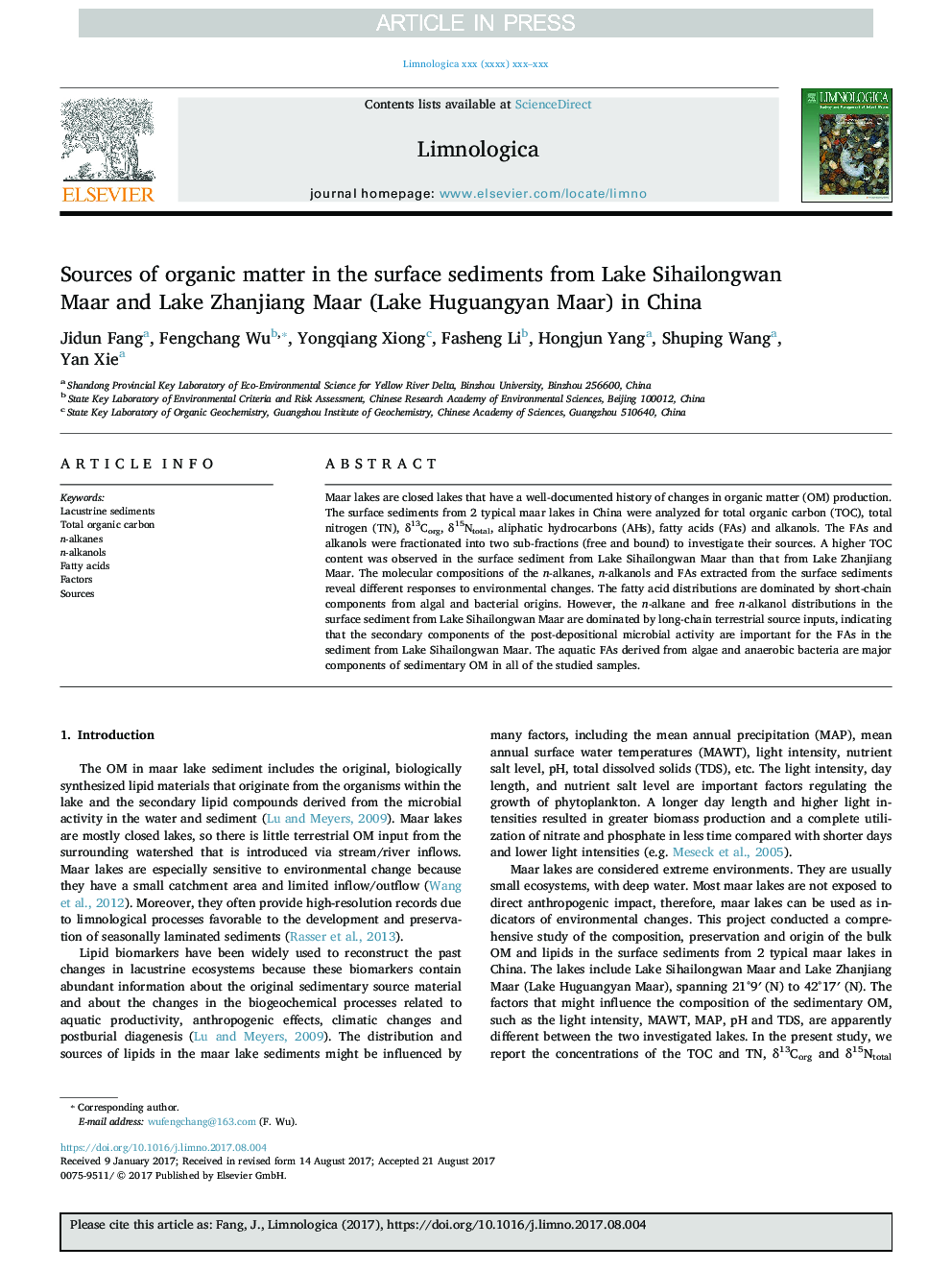| Article ID | Journal | Published Year | Pages | File Type |
|---|---|---|---|---|
| 8849382 | Limnologica - Ecology and Management of Inland Waters | 2018 | 6 Pages |
Abstract
Maar lakes are closed lakes that have a well-documented history of changes in organic matter (OM) production. The surface sediments from 2 typical maar lakes in China were analyzed for total organic carbon (TOC), total nitrogen (TN), δ13Corg, δ15Ntotal, aliphatic hydrocarbons (AHs), fatty acids (FAs) and alkanols. The FAs and alkanols were fractionated into two sub-fractions (free and bound) to investigate their sources. A higher TOC content was observed in the surface sediment from Lake Sihailongwan Maar than that from Lake Zhanjiang Maar. The molecular compositions of the n-alkanes, n-alkanols and FAs extracted from the surface sediments reveal different responses to environmental changes. The fatty acid distributions are dominated by short-chain components from algal and bacterial origins. However, the n-alkane and free n-alkanol distributions in the surface sediment from Lake Sihailongwan Maar are dominated by long-chain terrestrial source inputs, indicating that the secondary components of the post-depositional microbial activity are important for the FAs in the sediment from Lake Sihailongwan Maar. The aquatic FAs derived from algae and anaerobic bacteria are major components of sedimentary OM in all of the studied samples.
Related Topics
Life Sciences
Agricultural and Biological Sciences
Aquatic Science
Authors
Jidun Fang, Fengchang Wu, Yongqiang Xiong, Fasheng Li, Hongjun Yang, Shuping Wang, Yan Xie,
